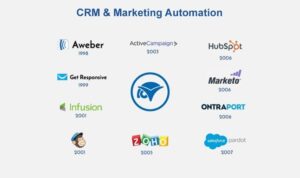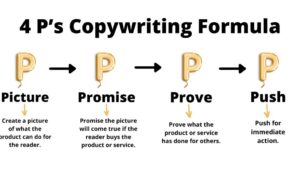Developing a Twitter Marketing Strategy takes center stage, inviting you into a world of social media mastery where businesses thrive and trends are set. Get ready to dive into the art of Twitter marketing like never before.
Understanding Twitter Marketing

Twitter marketing is crucial for businesses looking to enhance their online presence, engage with their audience, and drive traffic to their website. With over 300 million active users, Twitter provides a platform for businesses to reach a wide audience and connect with potential customers in real-time.
Importance of Twitter Marketing
Twitter marketing allows businesses to increase brand awareness, promote products or services, and engage with their target audience effectively. By sharing engaging content, businesses can build relationships with customers, drive website traffic, and generate leads.
Successful Twitter Marketing Campaigns
- Wendy’s – The fast-food chain gained attention and engagement by using a witty and humorous tone in their tweets, interacting with followers, and creating viral tweets.
- Oreo – Oreo’s “dunk in the dark” tweet during the Super Bowl blackout went viral, showcasing the power of real-time marketing and creating brand buzz.
- Dove – Dove’s #RealBeauty campaign encouraged women to share their stories and embrace their natural beauty, sparking a conversation and increasing brand loyalty.
Key Elements of a Twitter Marketing Strategy
- Consistent Brand Voice: Maintain a consistent tone and style in tweets to build brand recognition and connect with your audience.
- Engaging Content: Share valuable and engaging content, including images, videos, polls, and hashtags to increase audience interaction.
- Use of Hashtags: Utilize relevant hashtags to increase visibility, join conversations, and reach a wider audience interested in specific topics.
- Interaction and Engagement: Respond to mentions, messages, and comments to show that you value your audience and build relationships.
- Analytics and Monitoring: Track performance metrics, analyze data, and adjust your strategy based on insights to optimize results and reach your marketing goals.
Setting Objectives
In order to create a successful Twitter marketing strategy, it is crucial to set clear objectives that align with the overall goals of the business. By establishing specific goals and key performance indicators (KPIs), businesses can track their progress and measure the success of their Twitter marketing campaigns.
Goals Achieved Through Twitter Marketing
- Increasing brand awareness and visibility among target audience
- Driving website traffic and generating leads
- Engaging with customers and building relationships
- Promoting products/services and increasing sales
Key Performance Indicators (KPIs)
- Number of followers and growth rate
- Engagement metrics such as likes, retweets, and replies
- Click-through rate (CTR) on shared links
- Conversion rate from Twitter traffic to leads or sales
Aligning Twitter Marketing Objectives with Business Goals
It is essential to ensure that the objectives set for a Twitter marketing strategy are in line with the broader business goals. By aligning these objectives, businesses can maximize the impact of their Twitter efforts and drive meaningful results. This alignment helps in creating a cohesive marketing approach that contributes directly to the overall success of the business.
Target Audience
Defining a target audience is crucial for successful Twitter marketing as it helps in focusing efforts and resources on those who are most likely to engage with your content and convert into customers. By understanding the demographics, interests, and behavior of your target audience, you can create tailored content that resonates with them effectively.
Methods to Research and Understand the Target Audience on Twitter
- Utilize Twitter Analytics: Use the platform’s built-in analytics tools to gather insights on your followers, including demographics, interests, and engagement metrics.
- Conduct Surveys: Create polls or surveys on Twitter to directly ask your audience about their preferences, pain points, and feedback.
- Monitor Conversations: Pay attention to trending topics, hashtags, and discussions within your industry or niche to understand what your target audience is talking about.
- Competitor Analysis: Look at your competitors’ Twitter accounts to see who is engaging with their content and identify overlaps with your target audience.
Tailoring Content to Resonate with the Target Audience on Twitter
- Create Relevant Content: Develop tweets, images, videos, and links that align with the interests and needs of your target audience.
- Use Language and Tone: Adapt your writing style and tone to match the preferences of your audience, whether it’s casual, formal, or humorous.
- Utilize Visuals: Incorporate eye-catching visuals and multimedia content that appeal to your target audience’s aesthetic preferences.
- Engage and Listen: Respond to comments, messages, and mentions from your audience to show that you value their feedback and input.
Content Strategy

Creating engaging content for Twitter is crucial for a successful marketing strategy. It’s essential to grab the attention of your audience quickly and keep them interested. Visual media plays a significant role in capturing the audience’s attention and conveying your message effectively. Maintaining a consistent brand voice and tone helps in building brand recognition and trust among your followers.
Tips for Creating Engaging Content
- Use eye-catching visuals such as images, videos, and gifs to make your tweets more appealing and shareable.
- Keep your tweets concise and to the point to increase engagement. Use relevant hashtags to reach a wider audience.
- Ask questions, run polls, or create contests to encourage interaction with your followers.
- Share valuable and informative content that adds value to your audience’s lives.
- Utilize Twitter analytics to track the performance of your tweets and refine your content strategy accordingly.
Role of Visual Media, Developing a Twitter Marketing Strategy
Visual media such as images, videos, and infographics can help your tweets stand out in a cluttered feed. They not only make your tweets more visually appealing but also help in conveying your message more effectively. Including visual elements in your tweets can increase engagement, retweets, and overall reach.
Maintaining a Consistent Brand Voice and Tone
Consistency is key when it comes to brand voice and tone on Twitter. Your tweets should reflect your brand’s personality, values, and messaging consistently. Whether your brand voice is friendly, professional, humorous, or informative, it should remain consistent across all your tweets. This helps in creating a cohesive brand identity and building trust with your audience.
Engagement and Interaction: Developing A Twitter Marketing Strategy
Engagement is key to building a strong presence on Twitter. It involves interacting with your followers, responding to their messages, and creating opportunities for them to connect with your brand.
Strategies to Increase Engagement
- Regularly post interesting and relevant content to keep your followers engaged.
- Ask questions in your tweets to encourage responses and conversations.
- Host Twitter chats or Q&A sessions to interact directly with your audience.
- Run contests or giveaways to incentivize engagement and participation.
- Retweet and respond to mentions from followers to show appreciation and foster relationships.
Importance of Responding to Mentions and Messages
Responding to mentions and messages on Twitter is crucial for building trust and credibility with your audience. It shows that you value their input and are actively listening to their feedback.
Leveraging Twitter Polls, Chats, and Interactive Features
Twitter offers various interactive features that can help boost engagement:
- Use Twitter polls to gather feedback and opinions from your followers.
- Participate in relevant Twitter chats to connect with others in your industry and expand your network.
- Make use of Twitter Spaces to host live audio conversations with your audience.
- Create Twitter Moments to curate and share interesting content with your followers.
Hashtag Strategy
When it comes to Twitter marketing, hashtags play a crucial role in increasing visibility, reaching a broader audience, and promoting engagement. They help categorize content, make it searchable, and connect with users who are interested in a specific topic or conversation.
Importance of Hashtags in Twitter Marketing
- Hashtags make your tweets discoverable to users searching for or following a particular hashtag.
- They help increase the reach of your tweets beyond your followers by tapping into trending conversations.
- Using relevant hashtags can boost engagement with your tweets and drive traffic to your profile or website.
- Branded hashtags can create a sense of community around your brand and campaigns.
Best Practices for Hashtag Usage on Twitter
- Use relevant and specific hashtags that are related to your content or campaign.
- Limit the number of hashtags to 1-2 per tweet to avoid coming across as spammy.
- Research trending hashtags and incorporate them into your tweets when relevant.
- Create a unique branded hashtag for your campaigns to encourage user participation and track engagement.
- Avoid using overly long or complicated hashtags that may be challenging for users to remember or type.
Creating Branded Hashtags for Campaigns on Twitter
- Brainstorm ideas for a branded hashtag that aligns with your campaign goals and resonates with your target audience.
- Ensure the branded hashtag is unique, memorable, and easy to spell to encourage user adoption.
- Promote the branded hashtag across your marketing channels and encourage users to participate and share content using the hashtag.
- Monitor the performance of the branded hashtag, track engagement, and incorporate user-generated content into your campaign.
Analytics and Optimization
When it comes to Twitter marketing, analyzing performance and optimizing strategies are key to achieving success. Utilizing the right tools and interpreting data effectively can help businesses stay ahead of the game.
Twitter Analytics Tools
There are several tools available for analyzing Twitter marketing performance, such as:
- Sprout Social
- Hootsuite
- Buffer
Interpreting Twitter Analytics Data
It’s crucial to understand how to interpret Twitter analytics data to optimize strategies. Key metrics to look out for include:
- Engagement rate
- Click-through rate (CTR)
- Follower growth
- Impressions
Testing and Tweaking Strategies
Testing and tweaking strategies based on analytics insights is essential for continued improvement. By analyzing data and making necessary adjustments, businesses can refine their approach and achieve better results over time.






